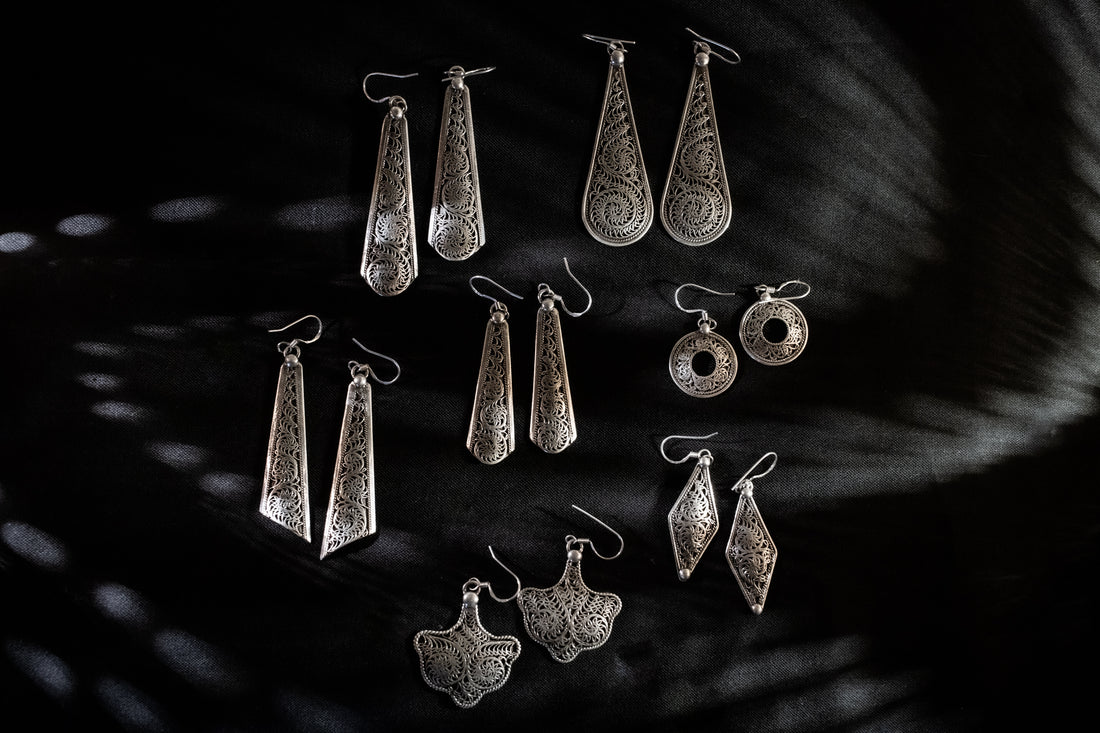
About Newari Art
Share
Newari Jewellry, Handmade in Nepal
Humans have been making and wearing jewellry for over 25,000 years. Back then, it served as a symbol of class and beauty. It quickly became a tradition to wear jewellry for special occasions or to emphasise status.
As manufacturing and mass production took over the fashion industry, handmade jewellry pieces are becoming something of a lost art. But in Nepal, handmade jewellry is still alive and well, particularly the Newari style.
What is Newari Jewellry?
Born in Nepal, Newari refers to a style of handmade silver jewellry featuring ornately carved patterns in metal. Artisans pay homage to tradition by crafting every piece using traditional techniques just as they have for centuries.
This is truly something special to behold, especially as technology and mass manufacturing have traded work ethic and artistry for simplicity and cost-savings. But in Nepal and surrounding countries, modern technology remains largely unseen. Villagers still rely on the way things have always been done, from farming to travelling and making everyday items like clothing and dishes. They appreciate a simple life, with simple things that bring them joy. This most certainly includes activities like making jewellry that will last for the ages.
Newari jewellry is largely symbolic and directly relates to Buddhism. According to the Newari caste system, jewellry varies between men and women, as well as age. Many of the traditional ornaments worn in Nepal, such as Loonswan, Tayo, and Ghau, are only to be worn by Nepalese. However, our artisans have crafted many fine Newari pieces using the same methods and materials to share with the world.
Newari Jewellry Straight from the Artisans
The tiny nation of Nepal is culturally rich, serving as home to more than 120 different ethnic groups and languages. It’s clear that Nepal is a place that values traditions, which is why we were certain we could find a variety of handmade arts and goods that upholds the Doti Sutra brand.
We found our craftsman in Kathmandu Valley, where jewellry making in the Himalayas has been a centuries-long practice. For decades, Westerners have known the people here to be among the most skilled metalworkers and casters in the world. Part of their success lies in keeping with tradition.
Their methods of production have not evolved much over the years, nor has the space in which they work. They keep it simple, requiring only the necessary equipment, a table, and a chair. With no distractions, no clutter, and no modern equipment to alter the learning and production curves, they can focus on creating a high-quality product. Why We Emphasise Tradition There’s great beauty in traditional ethnic jewellry, especially pieces that have been lovingly crafted by hand using tools, secrets, and techniques that have been passed down through generations.
As world travellers, we at Doti Sutra have had the pleasure of connecting directly with artisans around the world, face to face, to learn more about their cultures, values, and beliefs. And perhaps most importantly, how their lifestyles influence their art forms (and vice versa). After seeing our Nepalese artisans at work doing what they love and honour so much, it became even clearer to us that tradition never dies. The delicate filigree styles of their bracelets, rings, and earrings can be seen in jewellry pieces around the world, but none bear the fine craftsmanship, love, and attention to detail that our Nepalese friends can provide.
Shop Our Collection of Newari Jewellry!
At Doti Sutra, we have scoured the globe in search of unique handmade items for our store, and we hit the jackpot when we connected with our Newari artisans. Since 2019, we buy all of our Newari jewellry pieces from a family-owned and operated shop that we stumbled upon during our journey.
There are only a few silversmiths left who create this stunning style. As more generations lose interest in continuing the tradition, true Newari artisans are in short supply. We’re doing our part to help their technique avoid becoming a lost art.
